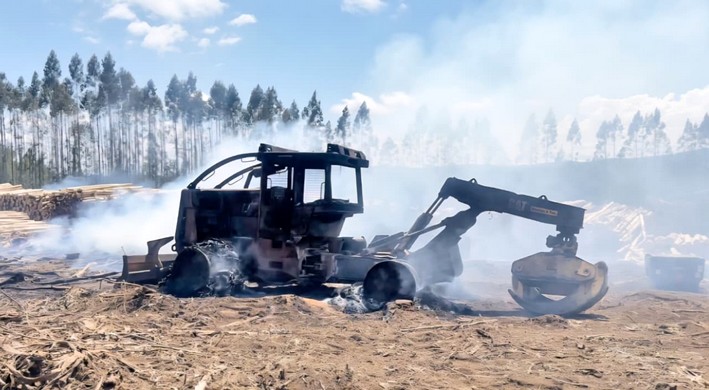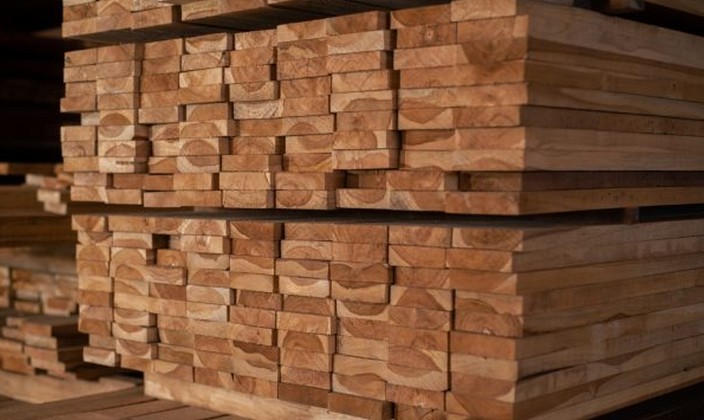Forest Sector and Circular Bioeconomy: A Source of Pride for Chile
Rodrigo O’Ryan Blaitt, General Manager of John O'Ryan Surveyors and President of the Chilean Biomass Association (AChBIOM).
It is evident that the way we interact with the environment requires abrupt and large-scale changes. We can no longer continue emitting polluting gases, liquids, and solid materials that end up destroying ecosystems, exterminating species, generating global warming, and harming living beings, among many other ills. As humanity, our days are numbered if we fail to find a solution to this problem, which urgently demands transitioning to a new model based on the efficient use of resources derived from renewable and environmentally friendly sources. This is where the concepts of "Bioeconomy" and "Circular Economy" come into play.
TheBioeconomyencompasses the production of renewable biological sources and the conversion of these resources and waste into value-added products such as food, feed, bioproducts, and bioenergy (Source: European Commission 2012).
TheCircular Economyis based on the principle that "the value of products, materials, and resources is maintained in the economy for as long as possible, and waste generation is minimized" (European Commission 2015). This places special emphasis on resource efficiency (both economic and ecological), not just waste, which is treated as a resource, in line with the previous policy of the European Community. The action plan includes two sectoral priorities directly linked to the bioeconomy: food waste and efficient biomass conversion.
The concepts of Bioeconomy and Circular Economy share similar goals and overlap to some extent, but neither is entirely part of the other nor embedded within it. Without delving too deeply, let us considerCircular Bioeconomyas the intersection of "Bioeconomy" and "Circular Economy."
It is in this context that the forest sector proves highly relevant, as it is and will increasingly be a vital player in the development of a "Circular Bioeconomy." Below are some key references of its main contributions to this challenge:
- Bioenergy: Green Energy
This involves using biomass as a replacement for fossil fuels. Currently, bioenergy generated from biomass (excluding biogas) is the leading renewable energy source both in Chile and globally, accounting for approximately 65% of production. Additionally, it is the second-largest energy source—just slightly behind diesel—in Chile's primary energy matrix, representing about 25% of it.
Looking ahead, the International Energy Agency states that to achieve Carbon Neutrality by 2050, we must reduce the share of fossil fuels in the energy matrix from 80% to 20%. To accomplish this, the modern use of biomass must increase by around 60% compared to its current share.
- Chemicals and New Types of Biofuels
Forest biomass has a high content of "green carbon." This characteristic is especially relevant in Chile, a future international leader in "green hydrogen" production. Both carbon and hydrogen compose many chemicals required across all aspects of our activities, particularly biomaterials, bioplastics, and other biopolymers. With "green carbon" and "green hydrogen," we can establish a sustainable "green chemical industry" from economic, environmental, and social perspectives, meeting international market demands to replace oil and its derivatives with renewable raw materials that have a low environmental footprint. In parallel, it is worth mentioning new climate-neutral fuels, known as "efuels," which are produced using energy generated from the sun, wind, or other renewable sources.
- Biomaterials, Bioplastics, and Biopolymers
The negative environmental footprint associated with transforming fossil raw materials into everyday products, along with the need and possibility of sequestering carbon long-term in bio-based products—helping reduce atmospheric carbon dioxide concentrations—makes the production of a wide variety of biomaterials, bioplastics, and biopolymers highly promising. These include products and applications ranging from insulating panels with eco-sustainable/fire-resistant coatings, wood construction, bio-based adhesives, paints, asphalt materials, textile fibers, biodegradable plastics, and many others.
- Fine Chemicals
Wood, bark, and foliage from tree species contain a wide variety of compounds that protect trees from fungal and insect attacks, provide natural resistance to decay, and prevent degradation reactions with atmospheric oxygen, among other functions. These compounds open a broad field for developing high-value fine chemicals for diverse industries such as food, pharmaceuticals, and advanced materials.
It is easy to see that the forest sector should be a source of pride for every Chilean, especially for those concerned about the environment and regional development.
How do we achieve this? Through collaboration, constructive and frank dialogue, innovation and science, trust, and commitment.
Initiatives like "Red Futuro Madera" (www.futuromadera.cl), led by Chile's main forest sector associations, as well as the work of the "Senate's Future Commission," called "Sustainable Forest Future," carried out by a multisectoral expert commission, academia, NGOs, and the community, are precisely aimed at developing this Bioeconomy with a strong social component focused on territorial development.
We build a green future together. The first step is feeling proud and committed to this great sector and the positive impact we can generate through it. Join us and spread the word!

















